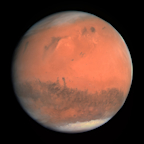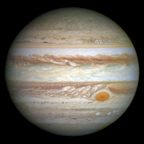Search results
Sun. The Sun is the star at the center of the Solar System. It is a massive, nearly perfect sphere of hot plasma, [18] [19] heated to incandescence by nuclear fusion reactions in its core, radiating the energy from its surface mainly as visible light and infrared radiation with 10% at ultraviolet energies.
News about Cameron Brink, Connecticut Sun, knee injury
News about after-sun lotion, Veuve Clicquot, skincare routine
Also in the news
Overview. The Sun's gravity holds the solar system together, keeping everything – from the biggest planets to the smallest particles of debris – in its orbit. The connection and interactions between the Sun and Earth drive the seasons, ocean currents, weather, climate, radiation belts and auroras.
Feb 2, 2024 · Sun. The sun is an ordinary star, one of about 100 billion in our galaxy, the Milky Way. The sun has extremely important influences on our planet: It drives weather, ocean currents, seasons, and climate, and makes plant life possible through photosynthesis.
Jun 9, 2021 · The surface of the sun is about 10,000 degrees Fahrenheit (5,500 degrees Celsius) hot, while temperatures in the core reach more than 27 million F (15 million C), driven by nuclear reactions. One...
From our vantage point on Earth, the Sun may appear like an unchanging source of light and heat in the sky. But the Sun is a dynamic star, constantly changing and sending energy out into space. The science of studying the Sun and its influence throughout the solar system is called heliophysics. The Sun is […]
6 days ago · The Sun contains almost ALL of the material in our solar system. 99% of it. All the planets, asteroids and comets add up to less than 1% of the total. The Sun is so far away that it takes light about 8 minutes and 20 seconds for it to get to us – and light is the fastest thing in the universe.
Mar 16, 2022 · The sun is a yellow dwarf star in the center of the solar system, and it is the largest, brightest and most massive object in the system. The sun formed around 4.5 billion years ago. At that...
3 days ago · Sun, star around which Earth and the other components of the solar system revolve. It is the dominant body of the system, constituting more than 99 percent of its entire mass. The Sun is the source of an enormous amount of energy, a portion of which provides Earth with the light and heat necessary to support life.
Sun Facts. The Sun is the star at the centre of our solar system. It is an almost perfect sphere of super-hot gases whose gravity holds the solar system together. The energy produced by the Sun is essential for life on Earth and is a driving force behind the Earth’s weather.
Sep 15, 2018 · Compared with the billions of other stars in the universe, the sun is unremarkable. But for Earth and the other planets that revolve around it, the sun is a powerful center of attention. It...




















